Sportingbet Romania – cazinou online și platformă de pariuri sportive
Sportingbet Romania este o platformă de entertainment digital concepută special pentru utilizatorii care apreciază un spațiu online sigur, modern și bine organizat. Site-ul oferă pariuri sportive, sloturi, jocuri de masă, mese live și promoții regulate, cu o interfață prietenoasă care facilitează navigarea ușoară. Platforma, concepută pentru utilizatorii din România, pune accent pe claritate, securitate și diversitate, oferind utilizatorilor instrumente utile pentru a-și gestiona responsabil jocul. Sportingbet se remarcă pentru viteza paginilor lor, pentru structura simplă a meniurilor lor și pentru faptul că oferă o experiență echilibrată între joc și analiză. Sportingbet este un loc popular pentru cei care caută divertisment online complet datorită atmosferei plăcute, actualizarilor constante și monitorizării tehnice avansate.
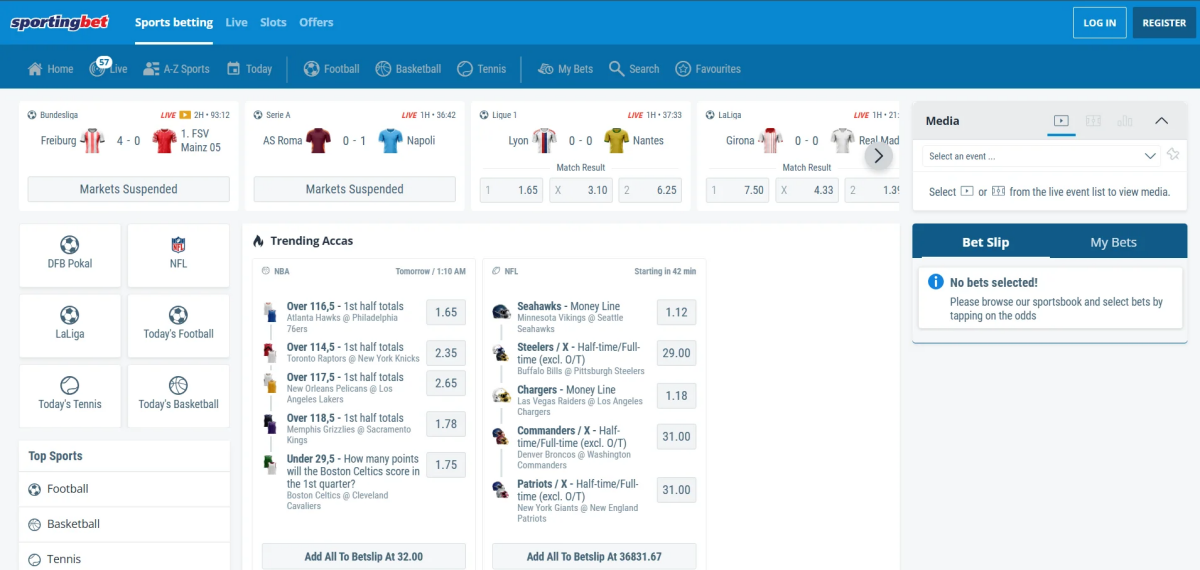
Sportingbet pariuri sportive

Secțiunea Sportingbet pariuri se distinge prin oferta vastă de evenimente sportive, acoperind campionate locale, competiții internaționale, turnee majore și meciuri din ligile intermediare. În timp ce fotbalul este cel mai popular, platforma oferă mai multe sporturi, cum ar fi tenis, handbal, baschet, hochei, fotbal american, UFC, curse de cai și alte sporturi. Fiecare eveniment are cote competitive și opțiuni de pariuri, cum ar fi linii alternative, handicapuri, intervale și opțiuni personalizate. Interfața bine structurată facilitează navigarea, iar secțiunea statistică oferă informații relevante despre echipe, forma recentă și rezultatele anterioare. Platforma oferă actualizări live rapide și grafice ușor de înțeles pentru cei care preferă pariurile în timp real.
Cum pariez la Sportingbet?
Procesul de pariere în zona Sportingbet pariuri live este accesibil oricui, indiferent de experiență. Urmează pașii de mai jos:
- Autentifică-te în cont pentru a accesa integral categoria Sportingbet pariuri live și toate evenimentele disponibile.
- Selectează sportul dorit, apoi intră în secțiunea de meciuri aflate în desfășurare.
- Alege un eveniment și analizează cotele, statisticile și tipurile de pariuri disponibile.
- Adaugă selecția în bilet, stabilește suma dorită și verifică câștigul potențial.
- Confirmă biletul prin butonul dedicat și urmărește actualizările live afișate în platformă.
- După finalizarea evenimentului, câștigul îți este procesat automat și adăugat în sold.
Ce este Sportingbet?
Sportingbet casino reprezintă o platformă online completă unde jucătorii pot accesa sloturi moderne, ruletă live, blackjack, baccarat, jocuri de masă, jackpoturi progresive și game show-uri interactive. Pentru a garanta jocuri fluide, animații clare și funcții inovatoare, platforma colaborează cu furnizori de software de top. Sportingbet respectă legea prin verificarea identității, protejarea datelor și controlul accesului minorilor. Utilizatorii se bucură de un mediu sigur, echitabil și bine controlat pentru a se bucura de divertisment online. Toate secțiunile site-ului sunt actualizate în mod regulat pentru a menține performanța ridicată.
Sportingbet jocuri
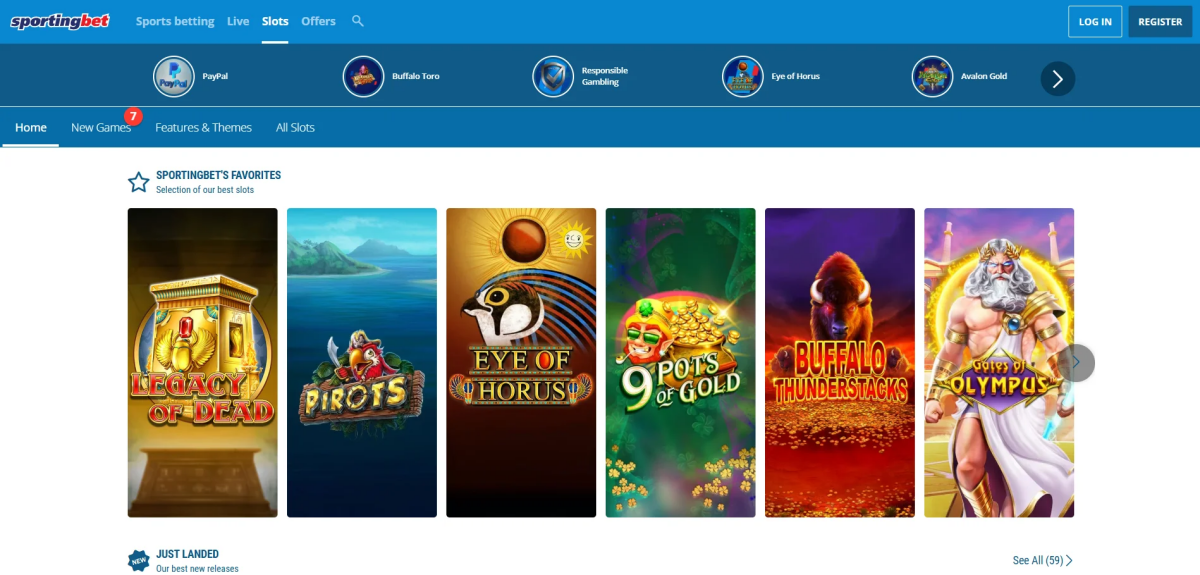
Categoria Sportingbet jocuri include sute de titluri create de furnizori renumiți din industria gamingului online. Jocuri de masă tradiționale, sloturi video moderne și jackpoturi uriașe sunt toate oferite de platformă și imită experiența unui cazino real. Fiecare joc are o tematică distinctă, simboluri unice și funcții bonus captivante. Utilizarea interfeței permite sortarea titlurilor în funcție de furnizor, volatilitate, popularitate sau funcții unice. Jocurile sunt concepute pentru a funcționa perfect pe dispozitivele mobile, fără întârzieri sau erori, indiferent de rezoluția ecranului.
Pacanele Sportingbet
Categoria pacanele Sportingbet este una dintre cele mai vizitate zone ale platformei, datorită selecției vaste de sloturi. Jucătorii pot găsi sloturi tematice cu grafică modernă, rotiri gratuite, multiplicatori, role suplimentare, caracteristici unice și jackpoturi progresive. De la modele simple care sunt inspirate din cazinourile clasice până la titluri complexe cu animații și mecanici inovatoare. Pacanelele sunt preferate de mulți utilizatori datorită ritmului alert, combinațiilor captivante și surprizelor din rundele bonus.
Jocuri live

Secțiunea Sportingbet live oferă acces la jocuri transmise în timp real, cu dealeri profesioniști și o atmosferă apropiată de cea a unui cazino tradițional. Studiourile moderne filmează mese de ruletă, blackjack și baccarat, iar jucătorii pot vorbi cu dealerii prin chat. Jocurile sunt structurate într-un mod captivant și transmisiile sunt clare. În plus, categoria conține show-uri de jocuri populare, care au reguli ușoare și premii atractive, ceea ce le face una dintre cele mai dinamice secțiuni ale platformei.
Jocuri de masa
Oferta Sportingbet se concentrează pe jocuri de masă, care includ ruletă europeană, americană și franceză, precum și o varietate de tipuri de blackjack, baccarat și poker digital. Fiecare joc are reguli clare, interfețe intuitive și mai multe niveluri de miză. Utilizatorii pot experimenta o varietate de strategii, astfel încât să se simtă ca și cum ar fi jucat într-un cazino real, cu avantajul că pot juca la propriul ritm. Jocurile sunt optimizate pentru toate dispozitivele, astfel încât să vă puteți bucura de o experiență constantă confortabilă.
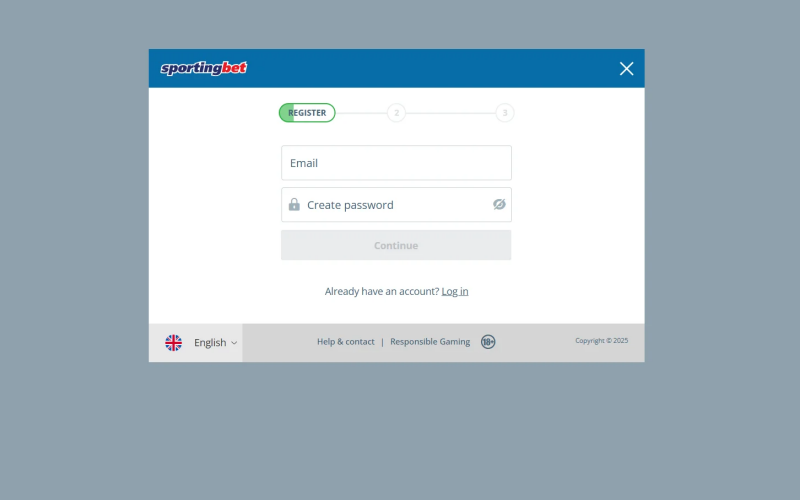
Cum fac cont la Sportingbet?
Procesul Sportingbet inregistrare este conceput pentru a fi simplu, rapid și conform normelor legale din România. Iată pașii necesari:
- Accesează pagina de înregistrare apăsând butonul Sportingbet inregistrare disponibil în partea superioară a site-ului.
- Completează formularul cu numele complet, adresa de email, numărul de telefon și CNP-ul.
- Alege un nume de utilizator unic și creează o parolă puternică, conform cerințelor platformei.
- Confirmă adresa de email accesând linkul transmis automat de sistem.
- Încarcă documentele necesare pentru verificarea identității și a vârstei.
- După validare, contul este activ și poți depune fonduri pentru a începe experiența de joc.
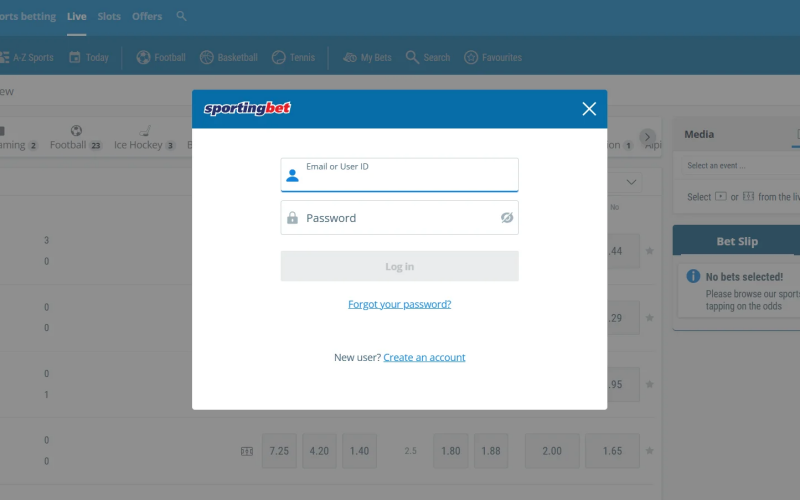
Sportingbet conectare
Funcția Sportingbet conectare permite acces rapid la contul personal de pe orice dispozitiv. Trebuie doar să introduceți parola și numele de utilizator pe care le-ați ales pentru înregistrare. Pentru a proteja datele platformei, sunt utilizate sisteme de criptare sofisticate. Poți folosi funcția de recuperare prin email în cazul în care ai uitat parola. Indiferent dacă utilizați un telefon, tabletă sau laptop, viteza de conectare este optimizată.
Cum se joaca Sportingbet?
Platforma Sportingbet RO este creată pentru a permite utilizatorilor să se bucure de jocuri într-un mod intuitiv. Urmează acești pași:
- Autentifică-te pe Sportingbet RO și verifică soldul contului.
- Selectează categoria dorită: pariuri sportive, sloturi, jocuri live sau jocuri de masă.
- Alege jocul dorit și consultă informațiile despre reguli, RTP sau mize.
- Stabilește suma pe care vrei să o investești în joc sau în pariuri.
- Începe sesiunea și analizează rezultatele afișate în timp real.
- Retrage câștigurile folosind metoda preferată din secțiunea financiară.
Cum sa castigi la Sportingbet?
Obținerea câștigurilor pe casino Sportingbet poate deveni mai eficientă atunci când jucătorii adoptă o strategie bine gândită. Iată recomandările:
- Alege jocuri cu RTP ridicat pentru șanse mai bune pe termen lung în casino Sportingbet.
- Stabilește un buget clar pentru fiecare sesiune și respectă-l strict.
- Folosește bonusurile pentru a extinde timpul de joc și a reduce riscul financiar.
- Testeză jocurile în modul demo înainte de a investi bani reali.
- Retrage câștigurile mari imediat ce apar pentru a evita pierderile ulterioare.
Bonusuri Sportingbet casino

Secțiunea Sportingbet bonus include promoții regulate, concepute pentru toate tipurile de utilizatori: începători și jucători activi. Rotiri gratuite, oferte la depunere, cashback săptămânal, turnee cu premii și programe de loialitate sunt toate bonusuri. Fiecare ofertă are termeni clari și cerințe de rulare. Promoțiile Sportingbet sunt frecvent actualizate pentru a oferi noi oportunități și avantaje. Aceste bonusuri sunt o modalitate bună de a vedea diversitatea platformei cu un buget mic.

Sportingbet bonus de bun venit
Sportingbet bonus de bun venit este oferit utilizatorilor noi și poate include fonduri suplimentare la prima depunere sau rotiri gratuite. Bonusul este ușor de activat și permite jucătorilor să exploreze platforma într-un mod avantajos. Termeni și condiții sunt clare și accesibile.

Sportingbet bonus fara depunere
Promoția Sportingbet bonus fara depunere este o oportunitate excelentă pentru jucătorii care doresc să testeze platforma fără investiție inițială. Bonusul oferă rotiri gratuite sau credit promoțional ce poate fi jucat pe anumite sloturi. Este o ofertă rară, disponibilă în campanii speciale.

Cod promotional Sportingbet
Utilizarea unui cod promotional Sportingbet oferă acces la bonusuri exclusive, precum rotiri gratuite, fonduri suplimentare sau promoții personalizate. Codurile sunt distribuite prin newsletter, parteneriate sau campanii publicitare. Activarea lor este simplă și se poate face în timpul depunerii sau în secțiunea dedicată bonusurilor.
Metode de depunere si retragere
Platforma Sportingbet romania pune la dispoziție metode de plată sigure și rapide pentru depuneri și retrageri. Acestea includ transferuri bancare, portofele electronice și carduri bancare. Depunerile și retragerile sunt aprobate rapid de Sportingbet, în funcție de metoda aleasă. Toate tranzacțiile sunt protejate prin metode anti-fraudă și criptare.
Cum să depui bani pe Sportingbet?
| Metoda | Descriere | Execuție | Minimum (Lei) | Maximum (Lei) |
| Visa / Mastercard | Depunere prin card de credit sau debit, utilizat legal și emis pe numele utilizatorului | Instant | 20 lei | 45.000 lei |
| Transfer bancar | Transfer direct din contul bancar personal în contul Sportingbet | 1–3 zile lucrătoare (în funcție de bancă) | 50 lei | 100.000 lei |
| Visa Electron / Maestro | Carduri bancare interne, cu conversie automată în lei | Instant | 20 lei | 45.000 lei |
| Portofele electronice (Skrill / Neteller) | Instrumente financiare digitale admise, utilizate pe numele clientului | Instant | 20 lei | 20.000 lei |
| Paysafecard | Voucher preplătit emis personal, fără surse ilegale | Instant | 25 lei | 3.000 lei |
| Apple Pay / Google Pay | Portofel digital legat de card personal valid | Instant | 20 lei | 45.000 lei |
| Bank Wire Express | Transfer bancar rapid procesat de procesatorul de plăți | În aceeași zi / 24 h | 50 lei | 50.000 lei |
| Aircash | Portofel electronic autorizat pe numele utilizatorului | Instant | 20 lei | 5.000 lei |
| Depunere la terminale/agenții partenere | Depuneri cash prin puncte fizice autorizate | Instant | 10 lei | 10.000 lei |
Depunerea fondurilor în secțiunea Sportingbet pariuri se face rapid, urmând acești pași:
- Intră în zona financiară a contului Sportingbet pariuri.
- Alege metoda preferată de depunere.
- Introdu suma dorită și verifică limitele impuse.
- Confirmă tranzacția și așteaptă procesarea imediată.
- Banii sunt disponibili instant pentru pariuri și jocuri.
Cum scot banii de pe Sportingbet?
| Metoda | Descriere | Execuție | Minimum (Lei) | Maximum (Lei) |
| Visa / Mastercard | Retragere către card de credit/debit folosit la depunere, emis legal pe numele utilizatorului | După aprobare (până la 3 zile lucrătoare), fondurile ajung în 2–5 zile lucrătoare | 50 lei | 100.000 lei |
| Visa Electron / Maestro | Carduri bancare interne, retragere permisă doar dacă au fost folosite la depunere | După aprobare, în 2–5 zile lucrătoare | 50 lei | 100.000 lei |
| Transfer bancar | Transfer bancar către contul personal al utilizatorului | După aprobare, în 1–3 zile lucrătoare | 100 lei | 100.000 lei |
| Skrill / Neteller | Retragere în portofele electronice utilizate la depunere | După aprobare, instant / în aceeași zi | 50 lei | 20.000 lei |
| Paysafecard (MyPaysafe) | Retragere în contul Paysafe utilizat la depunere, dacă este permită de procesator | După aprobare, instant | 50 lei | 3.000 lei |
| Apple Pay / Google Pay | Portofel digital conectat la cardul folosit la depunere | După aprobare, în 2–5 zile lucrătoare | 50 lei | 100.000 lei |
| Aircash | Portofel electronic autorizat, doar dacă a fost folosit pentru depunere | După aprobare, instant | 50 lei | 5.000 lei |
| Retrageri Cash în agenții partenere | Ridicare numerar din puncte fizice autorizate, după verificarea identității | După aprobare, în max. 48 h | 50 lei | 10.000 lei |
| Bank Wire Express | Transfer bancar rapid | După aprobare, în 24–48 h | 100 lei | 50.000 lei |
Retragerea este ușoară și sigură. Confirmați cererea după ce alegeți metoda de retragere și introduceți suma. Securitatea necesită verificarea identității. Deși timpul de retragere variază în funcție de metodă, platforma oferă estimări precise. Fondurile sunt transferate într-un cont bancar sigur.
Sportingbet contact
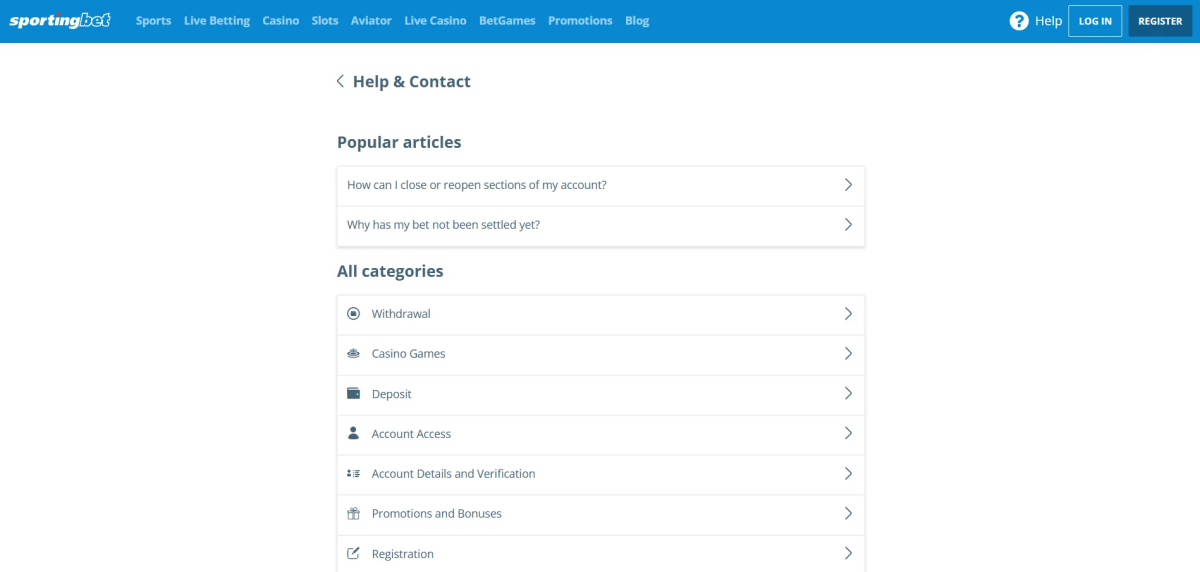
Sistemul Sportingbet contact oferă suport rapid și eficient prin email, live chat și ghiduri informative. Pentru orice problemă cu contul, tranzacțiile, bonusurile sau funcționarea jocurilor, echipa de asistență este disponibilă. Platforma promovează comunicarea eficientă și rezolvarea rapidă a solicitărilor.
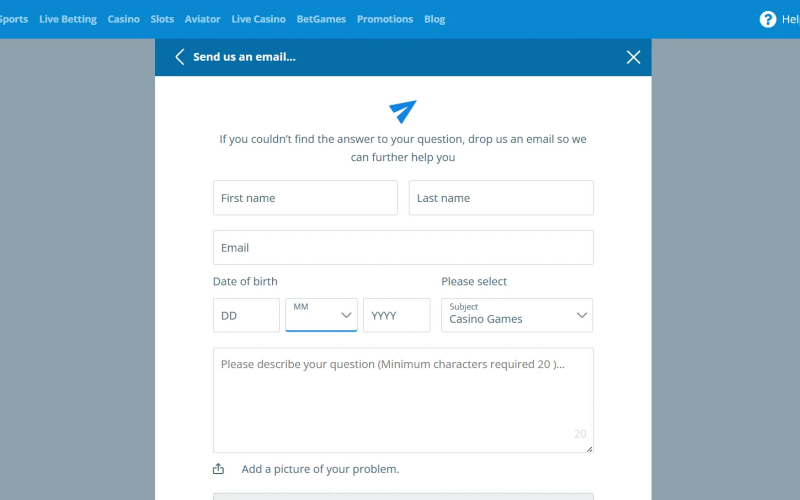
Email Sportingbet
Prin email Sportingbet, utilizatorii pot trimite întrebări complexe și pot primi răspunsuri detaliate direct de la echipa de suport.

Live chat Sportingbet
Funcția live chat Sportingbet oferă asistență instantă, ideală pentru probleme sau întrebări urgente.
Sportingbet android (apk)
Aplicația Sportingbet android este disponibilă prin fișier apk, care poate fi instalat cu ușurință pe orice dispozitiv. Versiunea mobilă oferă acces la pariuri live, sloturi și jocuri live, într-o interfață fluidă.
Sportingbet mobil iOS
Versiunea Sportingbet mobil pentru iOS este optimizată pentru navigare rapidă, stabilitate și acces la toate funcțiile platformei direct din browser.
FAQ
-
Cat dureaza o retragere la Sportingbet?
Pe Sportingbet romania, retragerile se procesează de regulă în 2–48 de ore, în funcție de metoda selectată.
-
Cum sterg cont Sportingbet?
Pentru a șterge contul pe Sportingbet romania, contactează echipa de suport și solicită închiderea definitivă a contului.
-
Cum iau bonusul la Sportingbet?
Activezi bonusurile introducând un cod promo Sportingbet în secțiunea dedicată ofertelor.
-
Unde vad rotirile gratuite pe Sportingbet?
Rotirile gratuite sunt afișate în zona de bonusuri din contul Sportingbet RO și pot fi folosite pe jocurile eligibile.
-
Cum rulezi bonusul Sportingbet?
Pentru rularea unui bonus bonus casino Sportingbet, trebuie îndeplinite cerințele minime de miză menționate în termeni.
-
Cat este comisionul de retragere la Sportingbet?
Pe Sportingbet casino, retragerile nu au comisioane interne, însă unele metode externe pot aplica taxe.


















